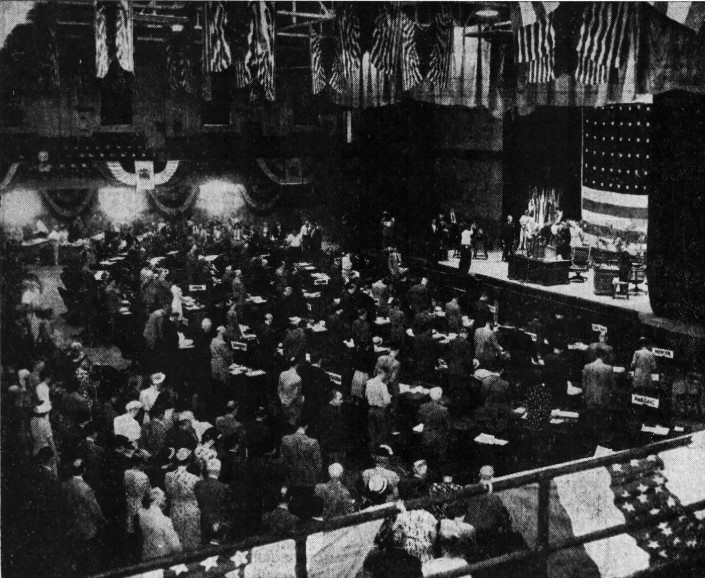
The last time President, Governor and U.S. Senate were on the ballot in New Jersey was 1940
By David Wildstein, December 15 2024 3:16 pm
Democratic gubernatorial candidate Ras Baraka has proposed eliminating odd-year elections, which the modern-day founding fathers opposed explicitly at the 1947 State Constitutional Convention.
The idea at the time was to keep elections for governor and the legislature focused on state issues – easier said than done in an era of a vibrant local press corps who could help – rather than becoming the flotsam and jetsam of national vibes. The issue was driven by a Republican governor, Alfred Driscoll, who fought for a new State Constitution – New Jersey’s third – that strengthened the powers of the Executive Branch and allowed him to seek re-election to a four-year term.
Before that, governors served a single three-year term and could not serve twice consecutively. The 21-member Senate served three-year terms, with one-third of the Senate on the ballot annually; members of the State Assembly had one-year terms.
The 1947 delegates didn’t necessarily reflect what New Jersey looks like today: of the 81 delegates, there were 74 men and seven women; Oliver Randolph, the grandson of a slave and an Essex County Republican, was the lone person of color; and the delegate included 54 Republicans, 24 Democrats, and three independents.
Every twelve years, the New Jersey governor’s race was concurrent with a presidential election; every six years, the state’s Class 1 U.S. Senate seat was also on the ballot. There were odd-year gubernatorial elections every six years.
So you don’t need to do the math in your head: once every twelve years, New Jersey would have the President, Governor, U.S. Senate, U.S. House of Representatives, State Assembly, and Freeholders on the ballot; one-third of the counties would have State Senate races, and depending on the cycle, county constitutional and municipal offices. (New Jersey had 21 state senators;
The last time New Jersey had the Big Three on the ballot simultaneously was in 1940: Democrat Franklin D. Roosevelt carried New Jersey by ten points over Republican Wendell Willkie; Democrat Charles Edison, the former U.S. Secretary of the Navy and son of the famed New Jersey inventor, defeated State Sen. Robert Hendrickson (R-Woodbury), 51%-48%, and incumbent William Warren Barbour was re-elected to the U.S. Senate by 11 points against Democrat James H.R. Cromwell, the former U.S. Ambassador to Canada and the husband of billionaire tobacco heiress Doris Duke.
Twelve of the fourteen U.S. House of Representatives members from New Jersey were re-elected; none in close races. Democrats flipped the 2nd district seat, a rematch between freshman Republican Walter Jeffries (R-Margate) and former Rep Elmer Wene (D-Vineland), a former state senator and chicken farmer. Wene won by three points.
No State Senate seats changed hands; Democrats picked up four Assembly seats.
In 1904 and 1928, Republicans won the presidential and gubernatorial elections in New Jersey; the GOP also flipped a U.S. Senate seat in 1928. In 1916, New Jersey went Democratic for president – Woodrow Wilson was a favorite son – and elected a Republican governor and U.S. Senator.
In presidential midterm years – 1910, 1922, 1934, and 1946 — the party in the White House never won the New Jersey Governor’s race.
Here are the other gubernatorial results from the first half of the 20th century, by type of election cycle:
